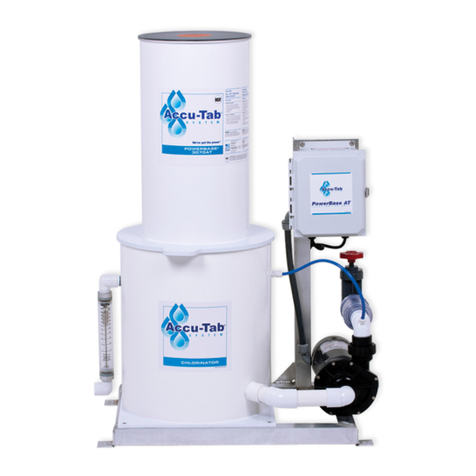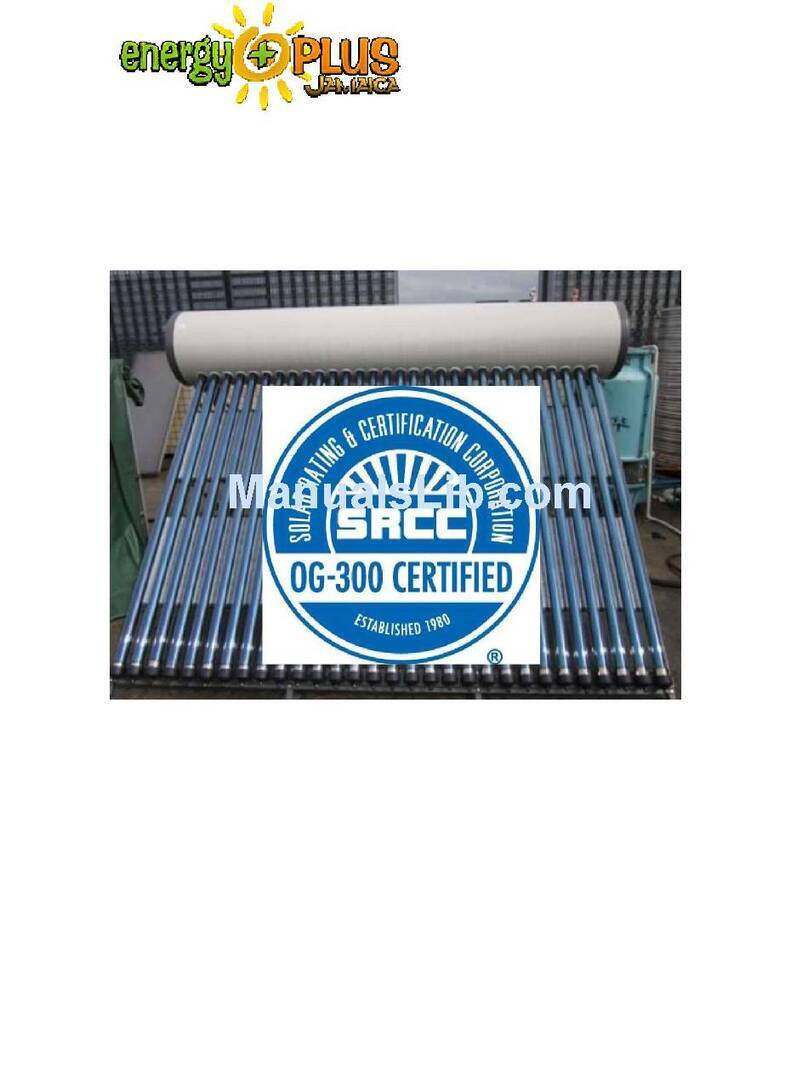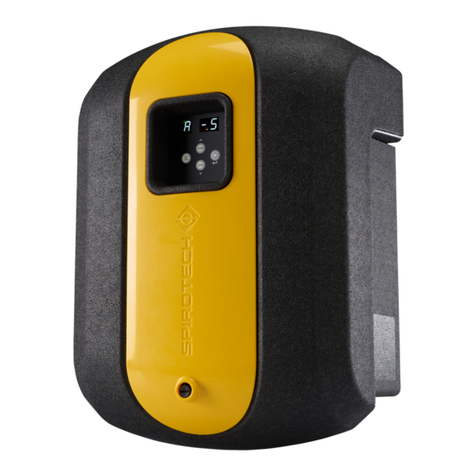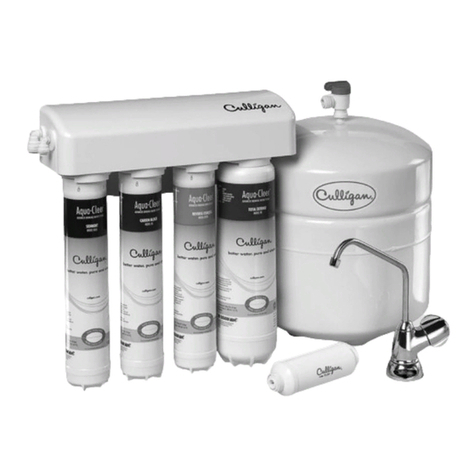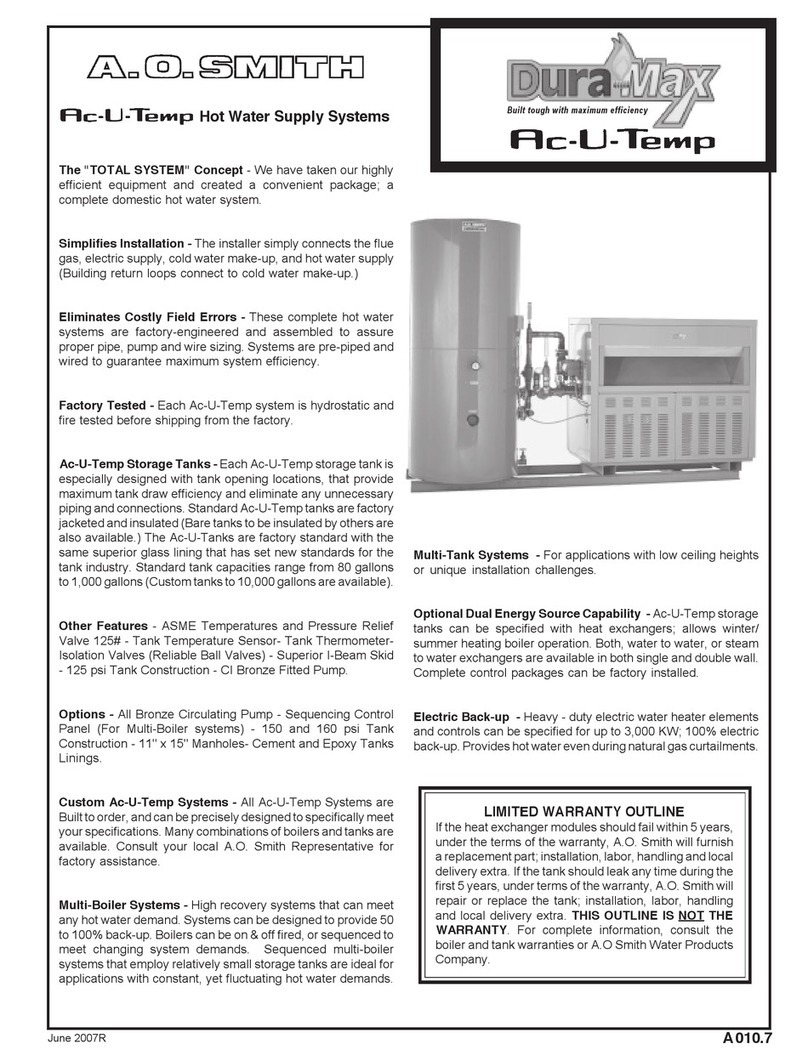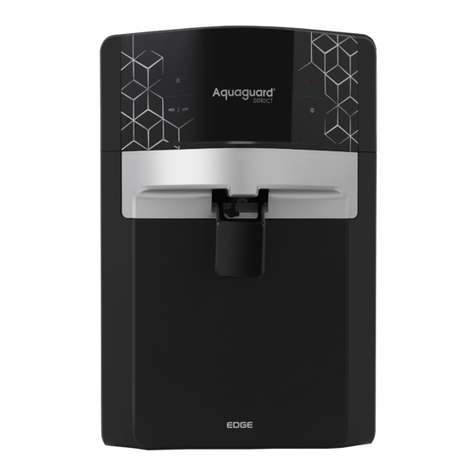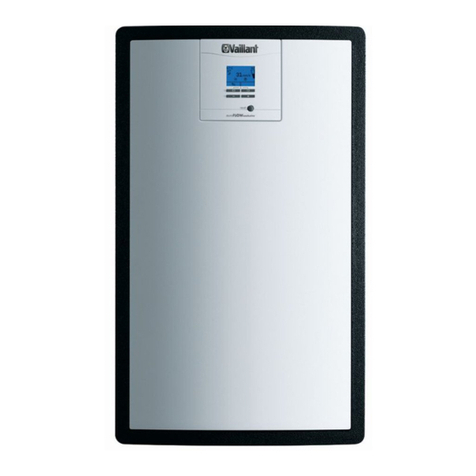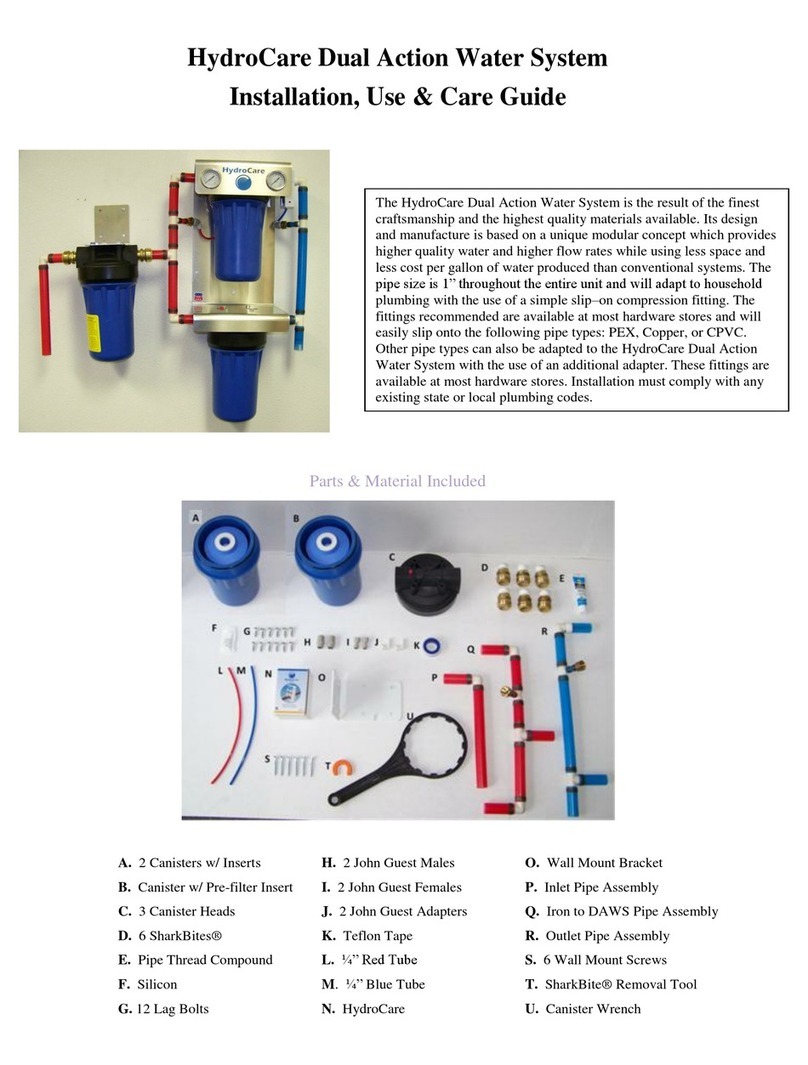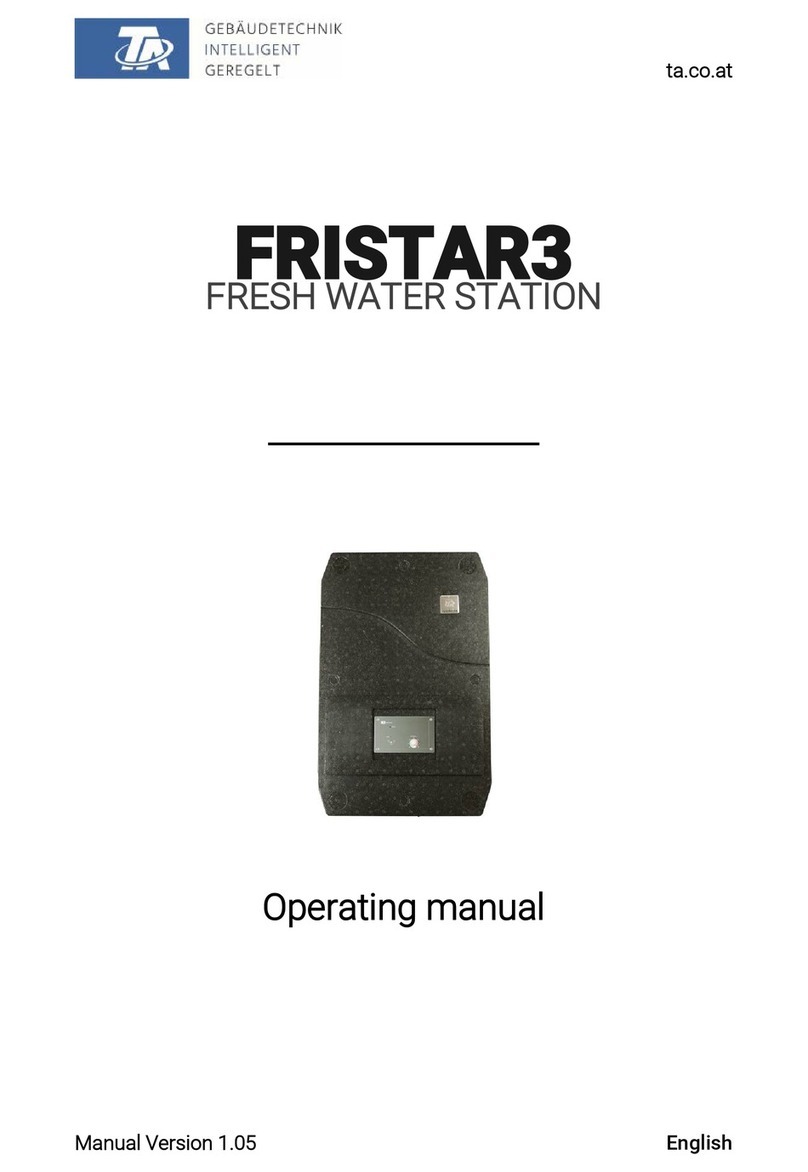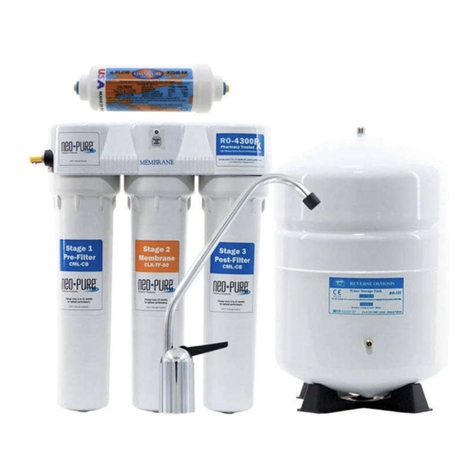
Your new Reverse Osmosis (R.O.) Drinking Water System uses a combination of filtration technologies to reduce unwanted
contaminants in a water supply. The following steps combine to give you the best in clear sparkling drinking water:
MECHANICAL FILTRATION ACTIVATED CARBON
The sediment Pre-Filter has been designed to help reduce
the larger particles such as silt, rust and scale. Its 5
micron (equal to 0.0002 inch) nominal rating helps to give
maximum life to the R.O. Membrane. The activated carbon
in the Pre-Filter has been designed to reduce any chlorine
that may be present in the feed water. This pretreatment
is also necessary for membrane protection.
REVERSE OSMOSIS MEMBRANE
The R.O. Membrane is the heart of the filtration system.
It is designed to reduce the dissolved mineral content
of the water. Minerals picked up in the environment by
the water are measured as Total Dissolved Solids (TDS).
In the Reverse Osmosis process, dissolved minerals are
separated from the incoming water (Feed Water) to produce
the product water (the Permeate). The excess minerals are
rinsed to drain (the Reject Water).
The membrane is a specially constructed, fully aromatic
polyamide film and is classified as a Thin Film Composite
(T.F.C.).
The spiral wound construction of the R.O. Membrane
provides maximum surface area for water production
and is less susceptible to fouling by particulate matter,
turbidity and colloidal materials.
ACTIVATED CARBON
The Activated Carbon Post-Filter contains carbon
particles with a vast network of pores. The tremendous
surface area of these pores (typically 800–1200 square
meters per gram of carbon) gives the carbon very good
adsorptive sites for substances that contribute to tastes
and odors.
IN–LINE ACTIVATED CARBON POST-FILTER
The In–Line Activated Carbon Post-Filter is located after
the Holding Tank and has been designed to reduce the
tastes and odors that may pass through the system.
It adds a final polish to the water.
AUTOMATIC SHUT-OFF VALVE
The ASO Valve senses when the Holding Tank is full and
closes the feed water supply to prevent excess reject water
from going to drain when the unit is not producing water.
WATER QUALITY MONITOR
The optional Water Quality Monitor has been integrated
into the system cover for instant monitoring at the touch
of a button. The monitor compares the level of the total
dissolved solids in the incoming (feed) water versus
the product water and calculates the percent rejection.
The monitor is preset to indicate a level of 75% rejection.
NSF/ANSI Standard 58 requires a 75% total dissolved
solids rejection to pass the requirement of the standard.
A green light indicates that the percent rejection is at
or above the set (desired) value and that the system is
producing quality water.
An amber light indicates that the product water quality is
less than acceptable. Because the Water Quality Monitor
was designed to operate best while the system is making
water, a false reading may occur if tested when your R.O.
drinking water system is not making water. Please empty
the Holding Tank, wait 15 minutes for the system to begin
making water, and test your water quality again. If the
Water Quality Monitor light is still amber, please contact a
water treatment professional for service. The Water Quality
Monitor requires a 9 volt battery, which is included. Systems
not equipped with a Water Quality Monitor contain a Water
Quality Test Kit.
SECTION I. INTRODUCTION
2
From top
products to our
dedicated customer
service and support,
we know what’s
important to you.
